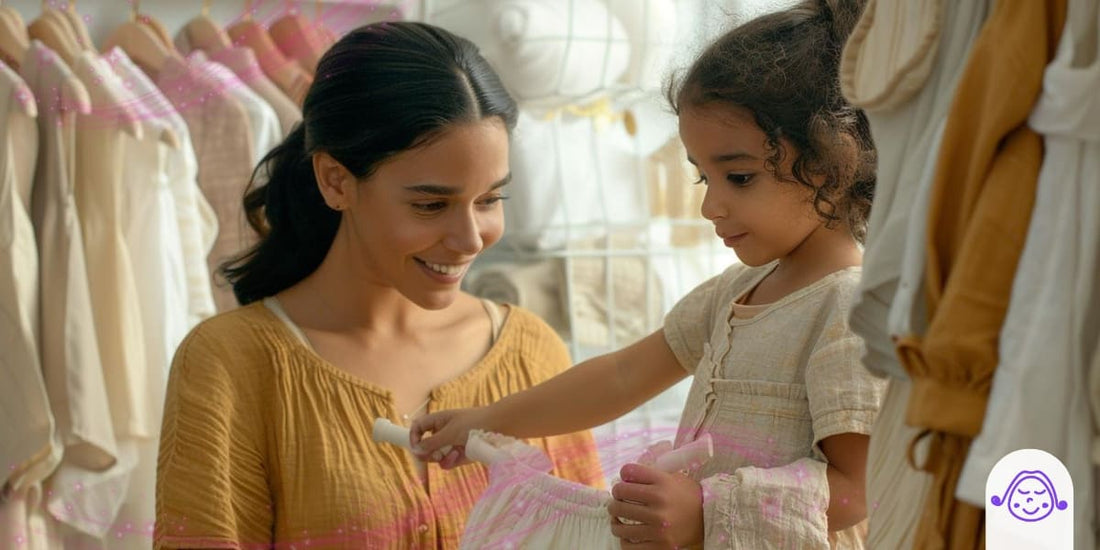
How to accompany your children when they want to dress themselves?
Share
Teaching children how to dress themselves is a significant milestone in their development. It fosters independence, boosts their confidence, and enhances their fine motor skills. However, the process can be challenging for both parents and children. How can you, as a parent, support and guide your child through this important phase without taking over?
The importance of allowing children to dress themselves
Allowing your child to dress themselves isn’t just about giving them a new task; it's about fostering growth in several key areas. By mastering the act of dressing, children develop fine motor skills as they learn to button, zip, and pull on their clothes.
It also promotes cognitive skills as they figure out the sequence of dressing and decide on appropriate clothing based on the weather or occasion. When children choose their own outfits, they express their personalities and preferences. This is an early form of self-expression that can be empowering for them
Create a supportive environment
A well-organized wardrobe makes it easier for children to dress themselves. Consider arranging their clothes by type and color, and make sure everything is within reach. You can read this article about storage tips.
Clothes that are easy to put on and take off make the learning process smoother. Choose clothing with elastic waistbands, Velcro fastenings, and large buttons.
Understand your child's developmental stage
It’s important to align your expectations with your child’s developmental stage. Younger children may struggle with more complex tasks like buttoning or tying shoelaces, so start with simpler tasks. Recognizing what is developmentally appropriate helps prevent frustration for both you and your child.
Choose easy-to-wear clothes
Begin with clothes that are straightforward for your child to put on. Elastic waist pants, slip-on shoes, and loose-fitting shirts are good starting points. As they become more confident, you can introduce more complex items like zippered jackets or laced shoes.
Let your children pick their outfits
Give your child the autonomy to choose what they want to wear. This simple act of decision-making empowers them and makes them more invested in the process. If you're worried about wild combinations, offer them limited options that are all acceptable to you.
Offer two or three options, and let them choose from those. This way, they still feel in control, but you can ensure that the options are appropriate.
Handle tantrums and setbacks
Frustration is natural when learning a new skill, and dressing is no exception. If your child becomes upset, stay calm and offer comfort. Sometimes, taking a short break and coming back to the task later can help.
Your attitude can greatly influence your child’s experience. Maintain a positive and patient demeanor, even if things aren’t going smoothly. This creates a supportive environment where your child feels safe to make mistakes and learn from them.
Recognize when your child needs assistance
It’s crucial to find a balance between encouraging independence and offering help when it’s needed. If your child is struggling with a particular task, like tying shoes or buttoning a shirt, offer to show them again or guide their hands. Knowing when to step in can prevent frustration and keep the experience positive.
Accompanying your child as he learns to dress himself is a rewarding journey that requires patience, understanding and a supportive approach. Remember that every child is different and progress varies. Also, the most important thing is to enjoy the process of watching your child grow and learn.